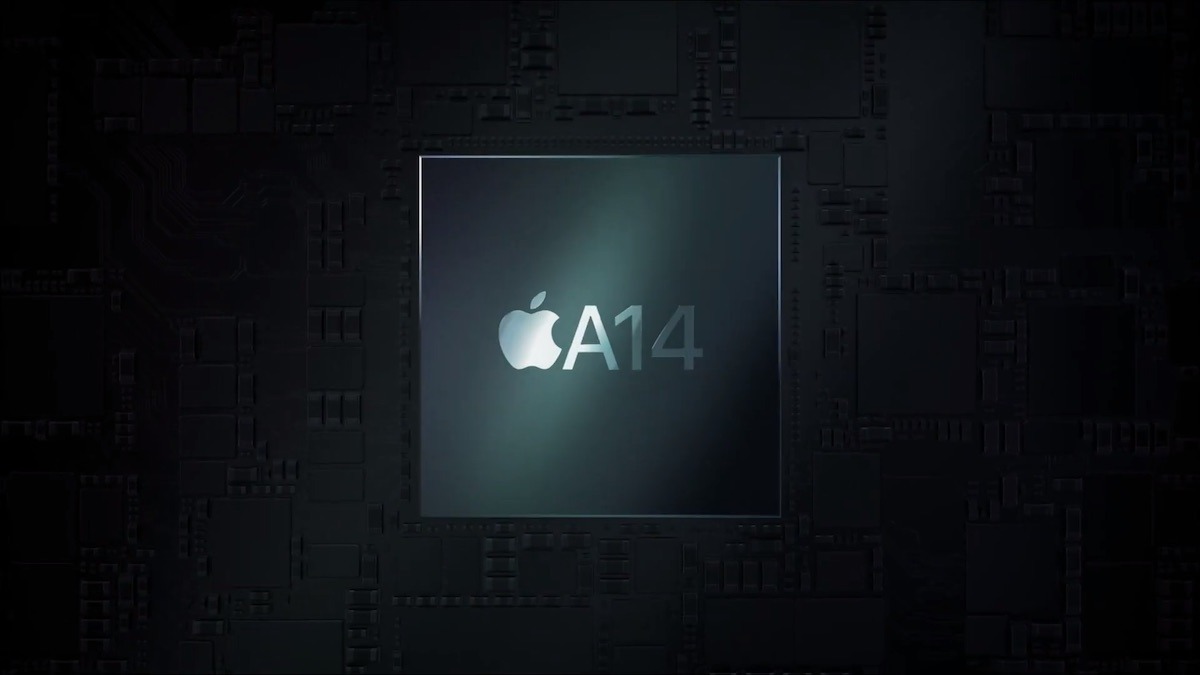During Tuesday's iPad and Apple Watch-focused "Time Flies" event, Apple debuted its newest piece of mobile-focused Apple silicon: the A14 Bionic.
Apple typically launches new chip generations with iPhone, but no new handsets were to be found at Tuesday's event. Instead, the A14 Bionic was announced alongside the new iPad Air.
The company did take time to detail some of the A14 Bionic's specifications and features, including the fact that it's the industry's first mobile chip to be built on a 5-nanometer production process. Thanks to that new ultra-small production process, the A14 Bionic manages to pack 11.8 billion transistors.
Apple says the A14 Bionic is a 6-core chip that features a 30% boost to CPU performance, and sports a new four-core graphics architecture for a 30% faster graphics boost. That is, however, compared to the previous A12 Bionic included in the iPad Air 3.
As AnandTech points out, that means that the A14 Bionic could be about 16% faster than the A13 Bionic if Apple's metrics are consistent across generations. Applying the same math to graphics yields an 8.3% boost to GPU power.
The A14 Bionic also features a 16-core Neural Engine that's twice as fast as the previous generation and capable of performing up to 11 trillion operations per second, allowing for significant boosts to machine learning. Combined with new CPU-based machine learning accelerators, Apple says machine learning tasks can be up to 10 times faster.
"This combination of the new Neural Engine, CPU machine learning accelerators, and high-performance GPU enables powerful on-device experiences for image recognition, natural language learning, analyzing motion, and more," Apple says.
The company also boasts a new advanced image signal processor, though it didn't give any details about its capabilities. Similarly, Apple didn't reveal whether the A14 Bionic features any significant power efficiency upgrades.
Although first debuted on the iPad Air, the A14 Bionic is largely expected to power upcoming "iPhone 12" and "iPhone 12 Pro" devices.
 Mike Peterson
Mike Peterson








 Marko Zivkovic
Marko Zivkovic
 Mike Wuerthele
Mike Wuerthele
 Christine McKee
Christine McKee
 Amber Neely
Amber Neely
 Sponsored Content
Sponsored Content
 Wesley Hilliard
Wesley Hilliard

 William Gallagher
William Gallagher









21 Comments
Interesting that Apple would announce the A14 on the iPad Air and not their flagship iPhone. Perhaps 5nm yields as such that the iPhone was delayed? In any case, the A14 is a very impressive piece of engineering. I would expect that Apple will also use the A14 in their future Macs. In any case, the iPad Air looks like a killer upgrade!
There are so many other areas that might see a boost. The ISP is new and coupled with the increased neural engine performance might give us some big camera upgrades (lightning fast focus, seamless digital zoom, better low light, better portrait mode, improved video stabilization, faster slo-mo modes...).
Apple says the A14 Bionic is a 6-core chip that features a 30% boost to CPU performance, and sports a new four-core graphics architecture for a 30% faster graphics boost. That is, however, compared to the previous A12 Bionic included in the iPad Air 3
Apple is saying the A14 in the iPad Air 4 is 40% faster in CPU, 30% faster in GPU and 100% faster in neural versus the A12 in the iPad Air 3. If that is an average increase, than the A14 would score about 1540 in GB5 single, 4000 in GB5 multi, and 6000 in GB5 Metal. Those are awesome scores for this machine.
For comparison, the A13 is 1330, 3360, and 6400 in GB5 single, multi and Metal. The Core i9-10910 in the iMac 5K, the 10-core, scores about 1300 and 9500 in GB5 single and mutli-core. CPU-wise, the iPad Air is an awesome value at its price point.
The GPU score though, is rather mysterious. It's no faster than the A13 in Metal. It's actually a regression. Maybe Apple downclocked the GPU for segmentation? There aren't any technical reasons why it would be slower than the A13.